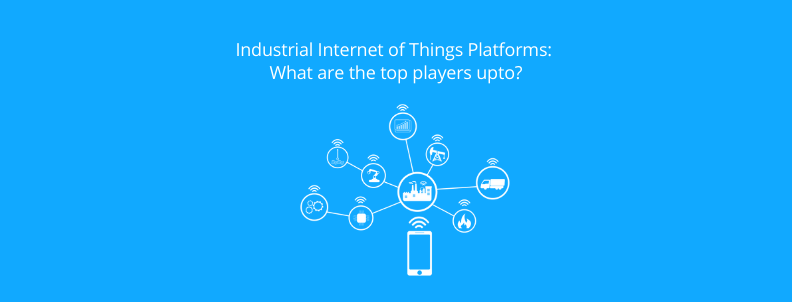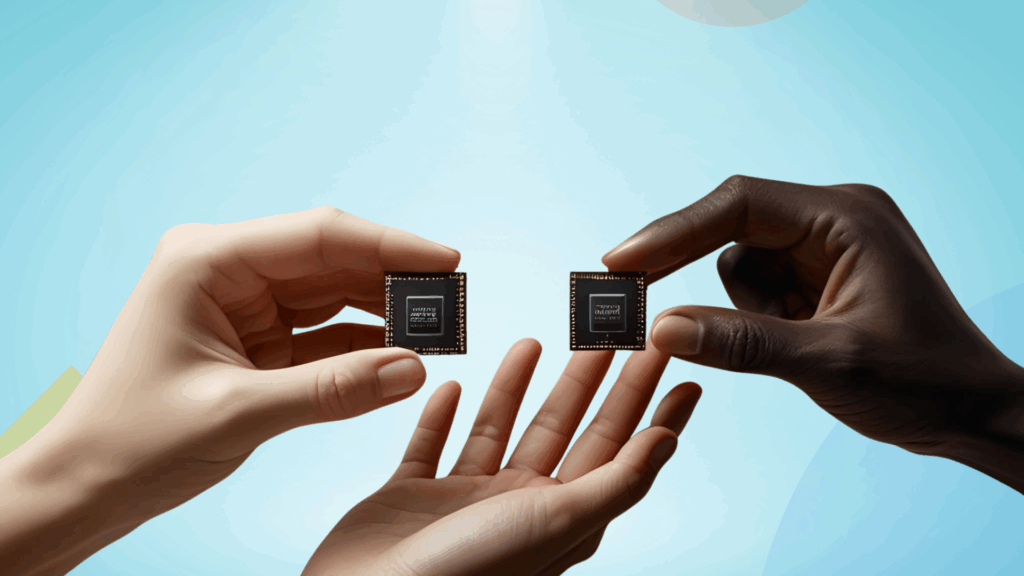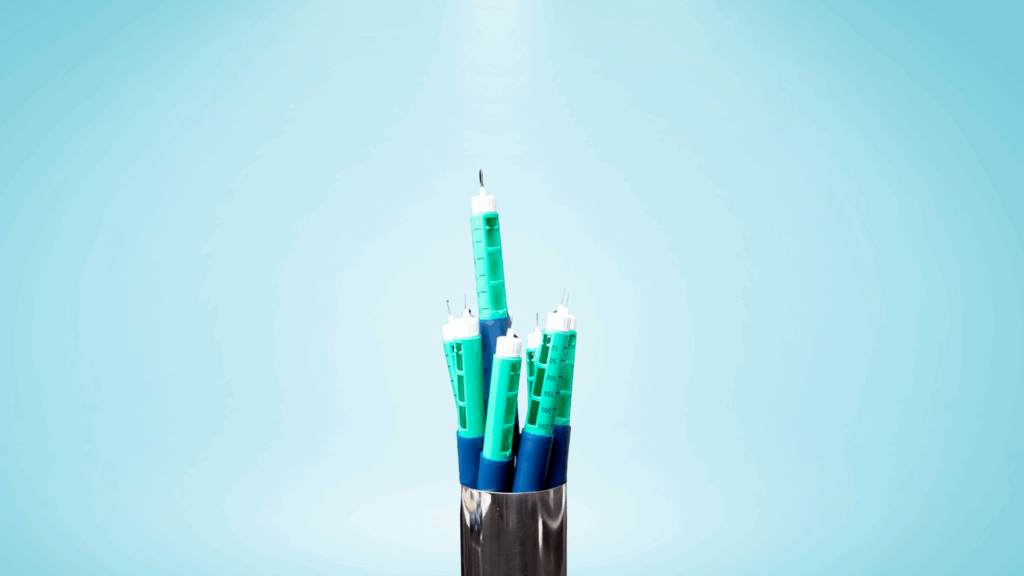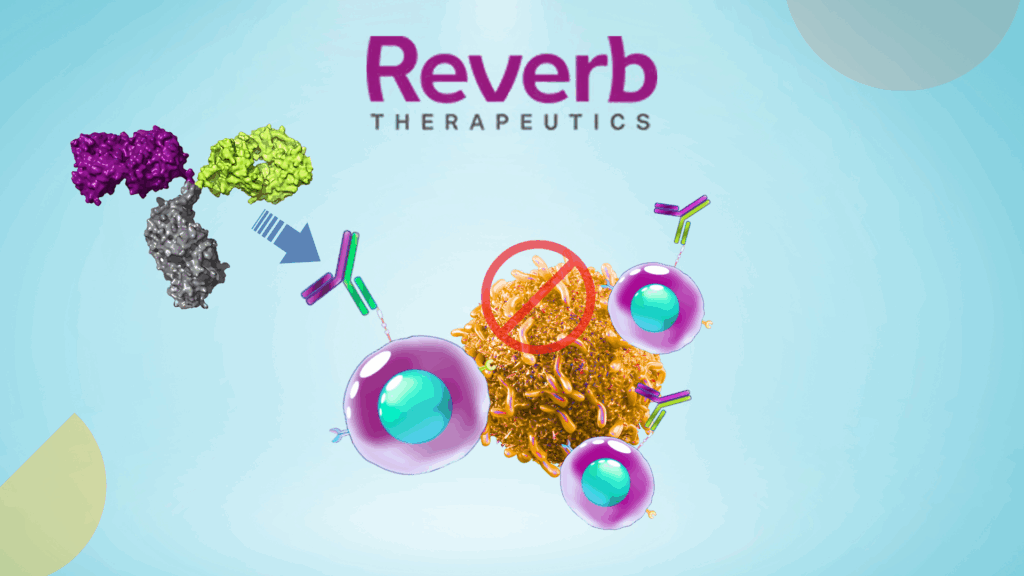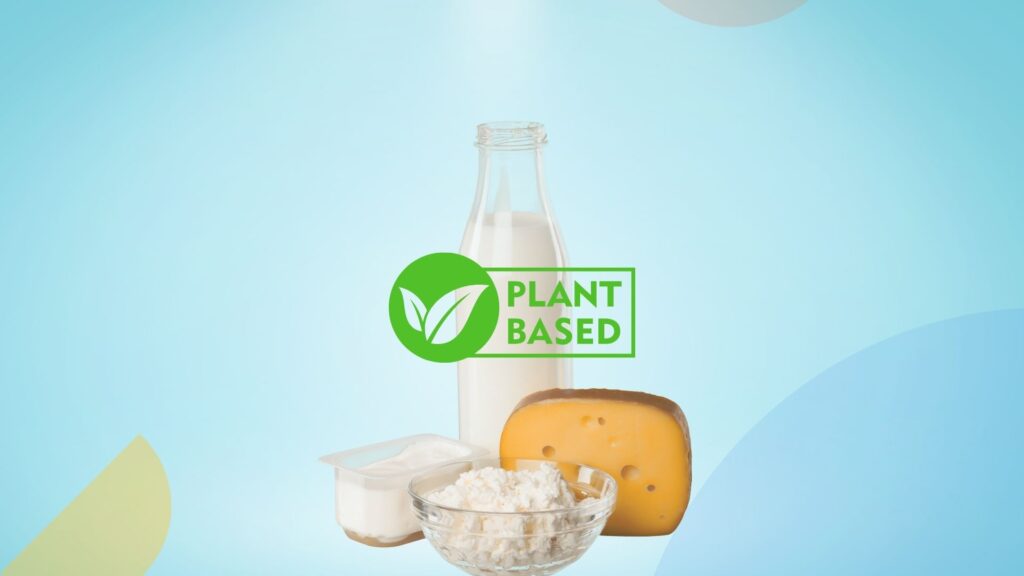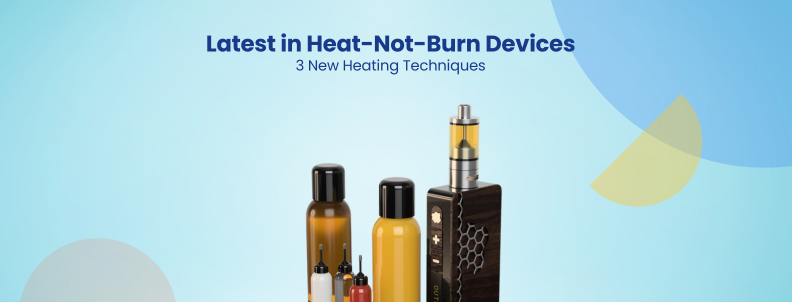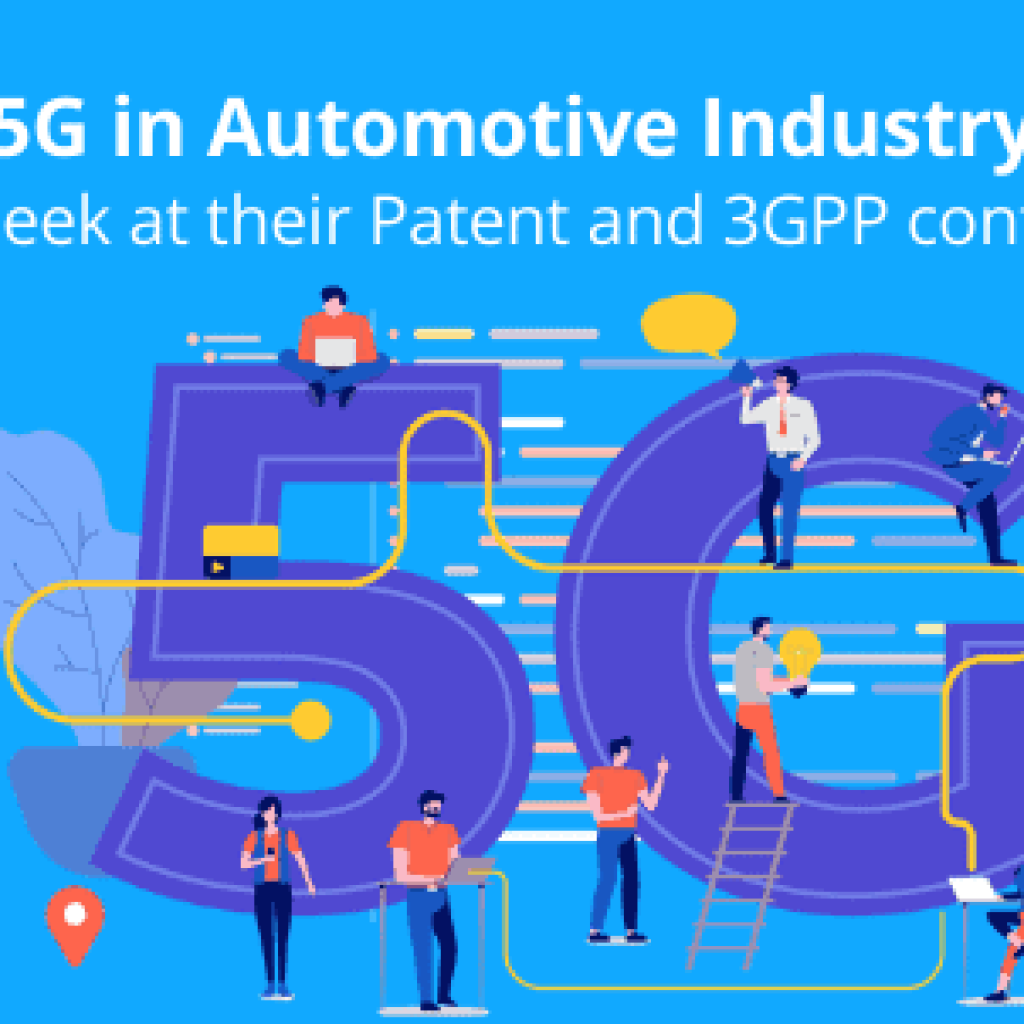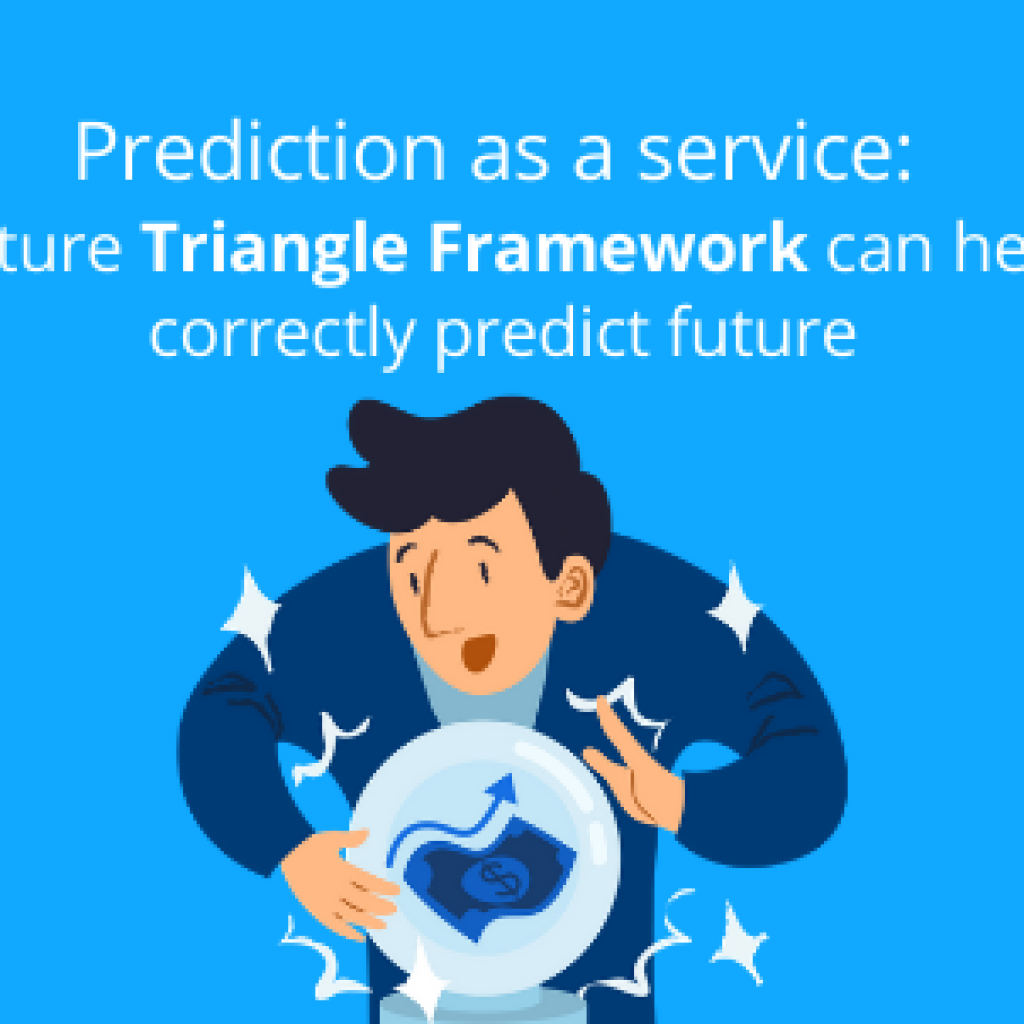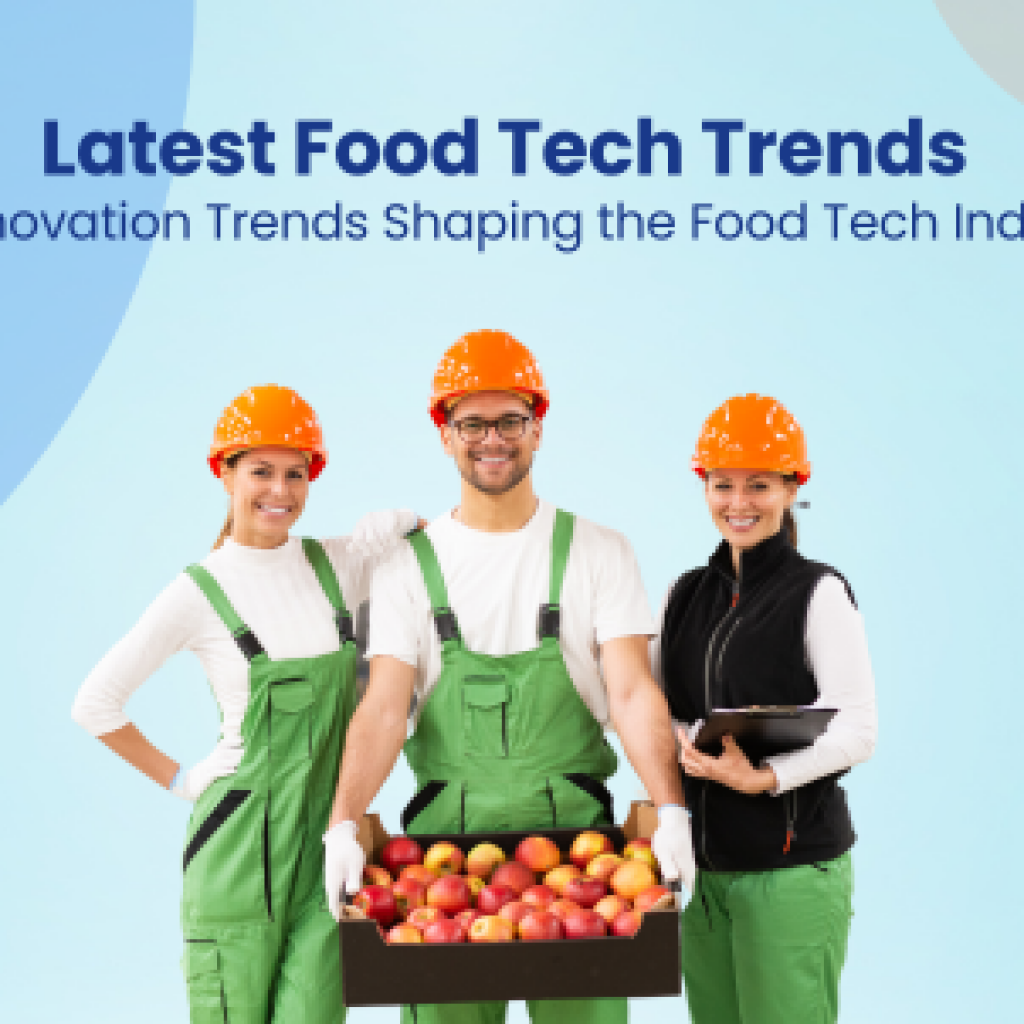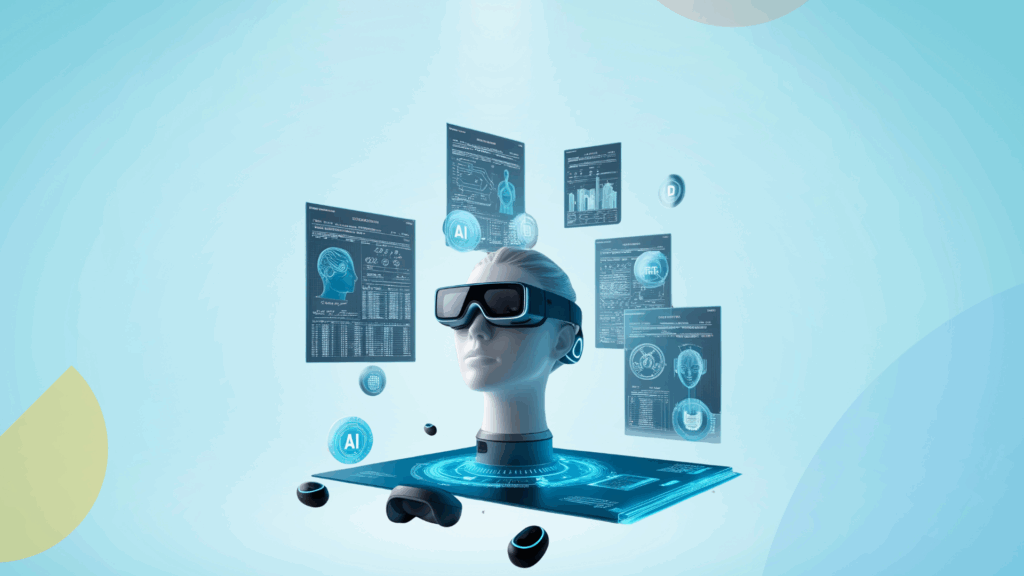The Industrial IoT technology is still in its infancy, but according to research reports, its market is expected to reach $105 billion by 2025 with a 7% CAGR. Industrial IoT, otherwise known as Industry 4.0, uses shrewd sensors, machines, and continuous investigation to provide proficient assembling and industrial solutions.
Although the execution of IIoT is not an easy task as nearly 70% of IoT and implicitly IIoT initiatives fail at the Proof-of-Concept (PoC) stage because of various components, but currently, there are enough proofs-of-concept which hint that industries are adopting IIoT platforms for making their manufacturing processes more efficient and smooth.
It’s even clearly visible as multiple companies have their own industrial IoT platforms which they provide as a platform as a service (PaaS). Since a lot of research is going on in almost all of the areas, numerous whitespaces can be discovered. Therefore, it would be difficult to predict who the industry leader is going to be. Even in Gartner’s 2019 Industrial IOT Magical quadrant, there isn’t any clear pioneer and challenger.
We were curious to know the top players and discovered the agreements and partnerships signed in the industrial IoT domain. So, we dug into the crowded industrial IoT platform market and did some intense research to figure all the research activity, partnerships, agreements, and M&As of all the major players.
Insights provided in this report can help you in:
- Gathering competitive intelligence by analyzing where other players are innovating
- Their collaborations and strategic initiatives
- Benchmark different IIoT platforms and see how they have evolved over time
- Gauge the direction in which the IIoT industry is moving
Overall, this report can provide you an expanded view of the top players in the IIoT industry and in case if you’re also working in this domain, it can help you see where you stand and which direction you need to go. Since there’s a lot covered in this report (it’s a massive 10,000+ words report packed with insights), chances are, you might not be able to read it completely. So to save your time and ensure you read it(albeit at a later point) we have converted this report in PDF format that you can save for offline reading or sharing with your colleagues.
Top IIoT Platforms
Below is the list of the IIoT platforms which we discussed in this study. You can click on the link to directly read about a particular platform.
Predix – GE IoT platform
Predix is General Electric’s platform which provides IIoT-based solutions by using and analyzing machine data. It’s a cloud-based Platform-as-a-Service software that helps connect people with industrial machines. Predix is a well-known platform and is currently being used by multiple companies.
Collaborations and Strategic Initiatives
- General Electric began, in 2015, a new line of business known today as GE Digital – a set of businesses geared towards its industrial business to provide niche services to third parties.
- In May 2017, GE Digital planned to adopt LinkedIn’s new open-source standard, which they designed and deployed for servers. GE wanted to use this standard for deploying edge data center solutions to get faster speeds for users of Predix.
- On August 1, 2017, GE Digital announced it had acquired Japanese startup IQP to help bolster its investments in the industrial Internet of Things. GE did not disclose the terms and conditions of the deal. However, according to a report by Haaretz, the Boston-based company agreed to acquire IQP for an estimated $30 – $40 million. The cited reason behind the acquisition being GE’s hopes that IQP’s technology would help jump-start adoption amongst partners and customers for its Predix IoT platform.
- In October 2017, GE Digital said its Predix Asset Performance Management software will be used to power its monitoring and diagnostic center, which tracks the health of more than 600 power plants around the world.
- On October 18, 2017, Apple tied up with GE to deliver industrial apps bringing predictive data and analytics from Predix, the latter’s industrial Internet of Things (IoT) platform, to the iPhone and iPad. The companies also unveiled a Predix software development kit (SDK) for iOS helping developers make their own industrial IoT apps.
- On October 24, 2017, GE Digital announced that it is going to add features to Predix to solidify its position in industrial IoT. These new features would let industrial enterprises run predictive analytics at the network edge, as close as possible to data sources, whether they be pumps, valves, heat exchangers, turbines or even machines on the move.
- GE Digital formed an alliance Program where it established partnerships with companies that are dedicated to advance the digital industrial ecosystem. On December 4, 2017, among other participating companies, Mocana Corporation, the leading provider of IoT security solutions for industrial IoT, also joined the program. With the alliance with GE’s platform, its customers will be able to leverage proven, military-grade security.
- In March of 2018, GE Digital and SIG, a leading provider of packaging systems and solutions for the food and beverage industry, announced a strategic partnership to power digital innovation in food and beverage packaging. SIG will deploy GE Digital’s Predix Asset Performance Management (APM) and Predix ServiceMax industrial applications across more than 400 customer factories worldwide to drive new levels of efficiency, create intelligent solutions and enable new possibilities for its customers.
- In March 2018, a team of around five engineers started monitoring the real-time power demand in two remote Indian villages at different times using GE’s industrial IoT software platform Predix and are accordingly feeding the grid with energy so that there is no wastage or short supply.
- On April 17, 2018, ServiceMax, a GE Digital software company for IIoT, and Zinc, a provider of an Enterprise Communication platform, announced a jointly developed solution for field service teams to communicate in real-time for correlating Predix ServiceMax work orders, accounts, installed products, and contacts. With this ability, both ServiceMax and Zinc can improve completion rates, productivity, and employee engagement.
- In May 2018, GE announced that its digital business orders had grown to $5.2 billion in 2017. The digital arm created a new software subscription business [Predix] and $1.4 billion was created in net new orders in the previous two years.
- On May 3, 2018, GE and MapAnything announced an alliance to combine Advanced Location-of-Thing (LOT) services with ServiceMax to unlock hidden abilities. By working together, the platforms can provide a comprehensive location-based field service solution that gives customers the ability to map ServiceMax data to optimize service fleet productivity and decrease response and delivery times. It can also help in boosting productivity and cutting operational costs related to service delivery.
- On June 5, 2018, ServiceMax and ProntoForms Corporation, the global leader in smart mobile forms for enterprises, announced a collaboration between the two companies to offer integrated smart mobile forms in Predix ServiceMax, the leading Field Service Management (FSM) solution.
- In June 2018, Sig Combibloc Group AG, a manufacturer of food and beverage cartons and filling equipment based in Neuhausen, Switzerland, tapped GE Digital to provide its Predix software to build a digital platform that aims to maximize uptime for manufacturing plant machinery. The initial rollout of the technology was expected to go live in July 2018.
- On July 20, 2018, GE and Microsoft announced the expansion of a partnership that began in 2016 when GE brought Predix to Microsoft’s cloud-based service Azure. The new partnership concerned the standardization of operational technology and information technology on Azure to eliminate obstacles the companies are currently addressing within the IIOT industry.
- In October 2018, GE investigated blockchain to incorporate the technology into a virtual power plant using its Predix platform. Steven Martin, GE Power’s chief digital officer, stated that the move was in response to a general trend away from large central generating plants and toward distributed generation. GE has traditionally had limited exposure to this area.
- On October 8, 2018, Electra Ltd, one of Israel’s Construction and facilities management leaders, selected Predix ServiceMax management software to support Electra’s service community, including the Internet of Things (IoT). The initiative enables preventative maintenance solutions and remote monitoring of thousands of devices for selected Electra customers. The Predix solution will also increase Electra’s customer service levels and connect the company’s service community – comprising field service engineers, contractors, customers and IoT devices from multiple business units.
- On October 25, 2018, ServiceMax announced the launch of Predix ServiceMax Asset Service Management (ASM), specifically designed for asset-intensive companies that maintain the assets they operate to increase equipment uptime and improve maintenance outcomes. This new offering helps customers transform their entire asset maintenance process from a break-fix model to a predictive service model.
- In November 2018, GE Digital announced it was expanding its Predix Internet of Things (IoT) platform to the edge, the company is adding more edge capabilities and introducing a private cloud. The new Predix Edge capabilities include adding analytics that will securely capture, process, and analyze data at the edge and also manage that data locally. It also added support for data storage in remote environments when the Predix platform is offline or only has intermittent connectivity.
- In January 2019, Tata Power in India started utilizing a digital asset management system from GE to optimize its thermal fleet. The company plans to roll out the same Predix Asset Performance Management solution across its renewable plants, which will then see the system working across 8 GW of power.
- On March 8, 2019, Chivasso installed GE’s Predix Asset Performance Management (APM) solution and also upgraded its steam turbine, which was manufactured by Ansaldo. GE said that following the heat retention upgrade, the steam turbine “reduced drastically its startup time to 90 minutes from the warm start”.
MindSphere – Siemens IoT platform
MindSphere is an open cloud platform developed by Siemens for applications in the context of the IoT. Mindsphere stores operations data and makes it accessible through digital applications to allow industrial companies to make faster decisions based on factual insights. Mindsphere connects products, plants, systems, and machines with advanced analytics capabilities.
Collaborations and Strategic Initiatives
- On May 10, 2018, Siemens announced that it launched its digitalization platform ‘MindSphere’ in India, along with four application centers in Pune, Noida, and Gurgaon (two).
- On June 26, 2018, Siemens PLM software announced PROLIM, a rapidly growing product lifecycle management (PLM) solutions company, its new partner for the MindSphere platform. As a MindSphere Partner, PROLIM will be able to build applications to solve customer pain points, improve efficiency and provide value to its large customer base.
- On July 6, 2018, Siemens’ PLM Software formed a new partnership with Infosys, an Indian digital services and consulting company, to develop applications and services for the MindSphere platform.
- On August 2, 2018, Siemens bought software developer Mendix for $730 million in cash to help build applications for MindSphere. Mendix’s software is designed around facilitating the design and delivery of low-code applications.
- In August 2018, Swinburne’s Hawthorn campus announced that it will house Australia’s first demonstration and application center – called MindSphere – a cloud-based Industrial Internet of Things operating system, developed by Siemens. Located in Swinburne’s Factory of the Future, the center will enable students, academics and industry partners to collaborate and co-create local and global projects on the cloud-based platform. The first industry and university for MindSphere partnership in Australia is an extension of the $135 million software grant by Siemens to Swinburne in 2017.
- On August 7, 2018, Siemens announced its collaboration with SparkCognition, a global artificial intelligence (AI) company, to deploy SparkCognition’s AI solutions on MindSphere. SparkCognition also joined the global MindSphere Partner Program, which will further enable them to enhance operations for companies in the Industrial IoT (IIoT) market.
- On September 14, 2018, Siemens Postal, Parcel & Airport Logistics (SPPAL) and Bangalore International Airport Ltd (BIAL) signed a Memorandum of Understanding (MoU) to jointly drive the digital transformation of BLR Airport. This partnership focuses on co-operation in several areas, including the digitalization of existing infrastructure using IoT applications. The solutions rest on MindSphere which will work with BIAL in the simplification of its processes, increase efficiency and continue to improve customer experience. BLR Airport is the third busiest airport in India, having handled over 25 million passengers in 2017.
- On September 21, 2018, Alibaba Cloud and Siemens reached an agreement to launch the MindSphere cloud platform in China’s mainland by the end of Q1 2019. It builds on an agreement between the two companies signed in July for the Industrial Internet of Things (IIoT) in the country.
- In October 2018, Siemens allied with a UK industrial systems integration company, Boulting Technology. Using MindSphere, Boulting customers can develop powerful industrial applications to optimize the entire value chain, from design to production planning, and engineering to services.
- On October 17, 2018, Siemens and Atos, a global leader in digital transformation, announced that they now deliver private cloud options for the MindSphere Cloud-based IoT Operating System, with the ambition to further accelerate their joint business cooperation in Digital Services and Digital technologies. Selected customers are now able to experience the solution on Microsoft Azure Stack.
- On November 5, 2018, BISTeL, a leading provider of adaptive intelligent (AI) applications for smart manufacturing announced that it joined the MindSphere Partner Program, Siemens’ partner program for Industrial IoT solutions and technology providers. BISTel applications were expected to be available on the MindSphere platform in the first quarter of 2019.
- On November 13, 2018, Siemens opened a new MindSphere Application Center in Abu Dhabi to focus on developing digital solutions, applications, and services for process industries, including oil and gas, water and wastewater. The center is the second of the third to be built in the UAE.
- On November 14, 2018, QuEST Global, the pioneering engineering services provider, announced that it joined Siemens’ MindSphere Partner Program to develop innovative connected solutions using the MindSphere platform. This partnership will enable QuEST to deliver on the connected engineering objectives of its customers across industries using data insights from advanced engineering analytics.
- On November 16, 2018, engineering firm AXISCADES joined the MindSphere Partner Program run by German technology giant Siemens. As a part of the MindSphere Partner Program, the company would be able to focus on digital transformation and help meet the smart manufacturing needs of its customers.
- On December 6, 2018, Siemens Postal, Parcel & Airport Logistics (SPPAL) and Cathay Pacific Services Limited signed a memorandum of understanding (MoU) for digitalization of the cargo infrastructure at Hong Kong International Airport. This project is to be implemented using the Internet of Things (IoT) applications and advanced data analytics.
- On January 11, 2019, Konecranes, a Finnish company specializing in the manufacture and service of cranes and lifting equipment, implemented Siemens’ digital innovation platform to accelerate its product development process and connect product and performance data. The company is using MindSphere, the open cloud-based Internet of Things (IoT) operating system, and the Teamcenter portfolio, the world’s most widely used digital lifecycle management software, to leverage the digital twin and reduce the number of physical prototypes, which helps to increase efficiency and decrease product validation time.
- Innovation and technology consultancy Boldly Go Industries developed digital applications and smart services for the industrial Internet of Things using the cloud-based and open IoT operating system Siemens’ MindSphere. As a partner and supporter of Siemens MindSphere, Frankfurter Beratung is a member of the MindSphere user group which sees itself as an open ecosystem.
- On March 6, 2019, Litmus Automation, an Industrial Internet of Things (IIoT) platform provider, announced that it joined the MindSphere Partner Program, the Siemens partner program for Industrial IoT solutions and technology providers. Litmus’ LoopEdge platform, available immediately, is designed to collect data from industrial devices and make it available on MindSphere.
Watson – IBM’s IoT platform
IBM Watson IoT is one of the top-performing IIoT-based platforms available on the market. It made its name in prominent lists such as Forrester Q3 2018 report where it was named as the leader in IIoT platforms. The platform is said to have brought simplicity and scalability without compromising security.
Collaborations and Strategic Initiatives
- In December 2016, IBM announced an experimental effort to bring its champion, Watson, to the Internet of Things (IoT). Further, it continued this vision by bringing Watson Analytics to Siemens’ cloud-based IoT operating system MindSphere. By integrating Watson Analytics into MindSphere, Siemens would be able to provide its business customers with analytics visualization and dashboards to help them make sense of their data.
- On February 24, 2017, IBM and Bosch agreed with terms on an Industrial Internet of Things (IIoT) collaboration which meant that Bosch’s IoT Suite services would be made available on IBM’s cloud platform-as-a-service (PaaS) Bluemix and the IBM Watson IoT Platform. This collaboration would enable IBM and Bosch’s clients to update their IoT devices over the cloud.
- On March 8, 2017, Industrial automation manufacturer and Internet of Things application toolset provider Opto 22 announced acceptance into the IBM Watson IoT Partner Ecosystem. This partnership is meant to provide developers with a full stack toolset for building applications that connect real-world signals and data from industrial “things” to the digital world of information technology, mobile, and cloud computing.
- On April 25, 2017, Swiss robotics and automation company ABB announced a partnership with artificial intelligence (AI) experts at IBM Watson. The ‘strategic collaboration’ combined ABB’s ability to gather data from industrial IoT devices with the AI and machine learning capabilities of IBM Watson IoT. By combining these strengths, the companies claimed, “they will be able to offer industrial players a product to address some of the burning challenges in IIoT. These include improving quality control, reducing downtime and increasing speed and yield of industrial processes.”
- On June 15, 2018, IBM acquired Oniqua Holdings Pty Ltd., a Denver-based provider of maintenance, repair, and operations optimization software for making a bigger play in IIoT space. The company said that it would help expand IBM Asset Optimization Practice, which includes Big Blue’s enterprise asset management system Maximo, by increasing its capabilities for predictive maintenance.
- On July 12, 2018, Telit, a global enabler of the Internet of Things (IoT) solutions, announced that its deviceWISE IoT platform is now fully interoperable with the IBM IoT platform. Working together, the two companies will help manufacturers and other businesses to minimize the cost, risk, complexity, and lead time of deploying solutions for monitoring and control, industrial automation, asset tracking, and field service operations.
- On September 28, 2018, IBM launched a range of new AI-enabled IoT offerings, to help organizations accelerate their IoT programs from strategy, implementation, and security to managed services and daily operations. Agriculture, customer service, human resources, supply chain, manufacturing, building management, automotive, marketing, and advertising are the sectors addressed by the new suite of Watson tools.
- On October 17, 2018, IBM bolstered its appeal to customers by strengthening its AI arm, running 75 active blockchain networks and helped protect banks from cyberattacks. IBM unveiled a new technology platform to help companies manage security, artificial intelligence, and storage services across multiple cloud systems, regardless of where they were built. This is part of IBM’s strategy to make cloud services more compatible with its competitors, rather than taking them head-on as it vies to catch up.
- On October 29, 2018, IBM Corp said it had agreed to acquire U.S. software company Red Hat Inc for $34 Billion, including debt, as it seeks to diversify its technology, hardware and consulting business into higher-margin products and services.
- Visa announced that it is embedding IBM Watson technology in its devices to make digital payments ubiquitous.
- From the manufacturing vertical, IBM and Bosch have announced a partnership, through which Bosch will make its IoT Suite available on IBM Bluemix.
- SNCF, the French railway operator, which transports over 13.5 million passengers every day, committed to using IBM Watson. This effort involves thousands of sensors that SNCF is deploying on its trains, covering more than 30,000 kilometers of tracks, 15,000 trains, and 3,000 stations.
- KONE, the leader in elevators and escalators, signed a multiyear agreement with IBM to drive innovation in smart buildings. According to IBM, KONE will tap into the IBM Watson IoT Cloud Platform to connect, remotely monitor and optimize its management of millions of elevators, escalators, doors, and turnstiles in buildings and cities worldwide.
ThingWorx® – PTC IoT platform
PTC is a leading software platform provider that leverages IIoT solutions to drive innovation, improve business outcomes and build a smart connected environment. PTC is quite active in providing IIoT solutions which can be found listed below along with the collaborations it made with other companies.
Collaborations and Strategic Initiatives
- On January 4, 2017, PTC announced that it has been named “Industrial Internet of Things Company of the Year” by IoT Breakthrough, an independent organization dedicated to helping the best Internet of Things (IoT) products and companies stand out in the industry. PTC also received the IoT Breakthrough award for “Industrial IoT Solution of the Year” for its Kepware® KEPServerEX® industrial connectivity software.
- On March 21, 2017, PTC and OSIsoft unveiled their intention to integrate the ThingWorx® Industrial Internet of Things (IoT) Platform with the OSIsoft PI System to enable faster development of IoT solutions from connected data sources. As planned, the integration would allow customers using the OSIsoft PI System data infrastructure to easily incorporate capabilities from ThingWorx – including application enablement, machine learning, industrial connectivity, and augmented reality – and access to applications on the ThingWorx Marketplace™ to more rapidly advance IoT initiatives and enable customers to expand and accelerate their return on investment.
- On May 17, 2017, PTC and ANSYS announced a solution that would enable ANSYS engineering simulation technology to be rapidly added to applications built on the ThingWorx® Industrial Internet of Things (IoT) platform from PTC. The development of a connector between these two technology platforms will enable customers to transform raw data into new forms of actionable intelligence. The connector will integrate intelligent digital simulation models with products as they exist and operate in the real world.
- On June 27, 2017, PTC announced that it has received the 2017 Compass Intelligence Awards for Industrial Internet of Things Company of the Year (IIoT) and IoT Innovative Product of the Year Vendor for the Consumer Market for its ThingWorx® Studio augmented reality (AR) solution. This was the third consecutive year that PTC witnessed its IoT leadership recognized by the Compass Intelligence Awards. In 2016, PTC was named Internet of Things Enablement Company of the Year and Leading Augmented Reality Vendor, and in 2015 PTC was named IoT Innovation Vendor of the Year for its ThingWorx® IoT technology.
- On July 11, 2017, PTC and L&T Technology Services Limited announced the opening of a Center of Excellence (CoE) focused on Industrial Internet of Things (IoT) innovation at LTTS’ office in Bangalore, India. Popularly termed as Industry 4.0, the Industrial IoT Center of Excellence will demonstrate the promise of digital transformations for companies across the globe and will showcase the technologies that make those transformations possible.
- On July 12, 2017, PTC and Tech Mahindra announced the opening of an Industrial Internet of Things (IoT) Center of Excellence at Tech Mahindra’s headquarters in Bangalore, India. The facility is designed to showcase the technology that companies can utilize for digital transformations – from product design through IoT connectivity and augmented reality. Tech Mahindra is outfitting the facility with offerings from the PTC technology portfolio, including the ThingWorx® Industrial IoT platform. Tech Mahindra, a longstanding PTC partner, and leading system integrator will advise customers on how ThingWorx and other PTC technology can enable them to generate business value.
- On January 30, 2018, PTC announced its partnership with Microsoft to make available the ThingWorx® Industrial Innovation Platform on the Microsoft Azure cloud platform, capitalizing on the two companies’ complementary technologies and together targeting opportunities in industrial sectors, including manufacturing.
- On June 13, 2018, Industrial automation company Rockwell Automation formed a strategic partnership with software company PTC. In an Industry 4.0 world, a factory is only as smart as the software that runs it. It is reported that the factory automation specialist Rockwell Automation is to make a $1 billion equity investment in software provider PTC.
- On August 08, 2018, PTC announced its partnership with Microland, a digital accelerator, to launch a new set of IIoT services and solutions. The other solutions include IIoT Data interoperability powered by KepServerEx, equipment optimization powered by Thingworx, and Thingworx system integration services. The partnership brings together Microland’s IT-OT integration capabilities along with PTC’s industrial automation platforms which could result in integrated Industrial IoT solutions to drive higher efficiencies, increase productivity, and reduce operational risk.
- On August 29, 2018, PTC announced that it has been named a leader in the Industrial IoT software platforms market for its ThingWorx Industrial Innovation Platform, according to a new evaluation from Forrester Research. In the Forrester evaluation, entitled “The Forrester Wave: Industrial IoT Software Platforms, Q3 2018,” PTC was among the top five highest-ranked in the “Current Offering” category and among the top four in the “Strategy” category.
- On January 16, 2019, PTC announced its OEM partnership in Industry 4.0 with Unlimit, the only end-to-end IoT service provider in India. This partnership will help Unlimit leverage PTC’s ThingWorx platform to accelerate Go To Market (GTM) and build smart, connected IoT solutions for Industrial IoT and AR/VR experiences. PTC will also have access to Unlimit’s India presence, IoT expertise especially in the Indian market, and mutual customer connects in the Manufacturing and Industrial IoT sector.
- On February 21, 2019, PTC announced its partnership with Digital Catapult in the launch of its Future Networks Lab, a London-based facility dedicated to leading-edge network and IoT technologies. The facility is designed to make use of leading advanced digital technology to drive early adoption of solutions that can make UK businesses more competitive and productive to grow the country’s economy. PTC, selected to partner with Digital Capital for its IoT and augmented reality expertise, will contribute its ThingWorx® connected Bosch Rexroth Cytropac unit to demonstrate the benefits of a device that has been engineered as a smart connected product, with connectivity from the edge to the cloud.
- On February 27, 2019, PTC announced the availability of a new version of its award-winning ThingWorx® Industrial Internet of Things (IIoT) solution platform. ThingWorx 8.4 introduced new capabilities, including Operator Advisor, designed to increase the productivity of factory workers by simplifying the way critical operational data is collected, synthesized, and delivered. The new version builds on PTC’s unparalleled IIoT strategy, further strengthening its robust portfolio of solutions that address real business challenges.
- On March 18, 2019, BlackRidge Technology International Inc., a leading provider of next-generation cyber defense solutions, announced that it has joined the PTC Partner Network. BlackRidge secures IT and OT networks to Industrial Internet of Things (IIoT) devices via patented First Packet Authentication™ technology, which authenticates identity and enforces security policy on the first packet of a network session. BlackRidge addresses the potential vulnerabilities of connected enterprises at a fundamental level, by stopping cyberattacks before they begin, while providing network micro-segmentation and segregation for IT and OT convergence.
Azure – Microsoft IoT platform
Microsoft Azure IoT platform is also a top contender among the top IIoT platforms. Microsoft has bigger plans related to its Azure platform, thanks to its CEO. For IIoT solutions, the platform is used by prominent companies to provide efficient solutions. The company also made multiple collaborations with other companies to improve its platform.
Collaborations and Strategic Initiatives
- On September 20, 2016, Microsoft teamed up with Sandvik to create a predictive analytics solution based on the Microsoft Azure IoT solution accelerators and Microsoft Cortana Intelligence Suite. This solution integrates people, machines, tools, materials, orders, storage handling, scheduling, and Microsoft Dynamics 365 for Field Service capabilities to empower customers to make the best possible business decisions.
- On March 21, 2017, Microsoft announced a long-standing partnership with OPC Foundation to transform manufacturing through connected solutions, reducing barriers to IIoT adoption and helping to deliver immediate value.
- In April 2018, Microsoft announced Azure Sphere, a three-pronged product poised to make the adoption and production of smart, connected devices easier and more affordable than ever. The three key components of Microsoft Azure Sphere — the Azure Sphere certified microcontroller (MCU), the Azure Sphere OS and the Azure Sphere Security Service — protect and power devices at the “intelligent edge:” in the hands of the customer or consumer, in the factory or in the supply chain — wherever smart devices are located.
- On April 17, 2018, Microsoft and C3 IoT announced a new partnership to focus on accelerating enterprise artificial intelligence (AI) and Internet of Things (IoT) application development. C3 IoT platform will leverage Microsoft Azure as the preferred cloud platform, which both parties believe will enhance the experience for enterprise customers.
- On April 23, 2018, Microsoft showed off its latest industrial internet of things (IIoT) innovations at Hannover Messe 2018. The software giant’s demonstration at the industrial technology conference was an automatic discovery service for Azure IoT Suite Connected Factory, said Sam George, partner director of Azure IoT at Microsoft. Comprising open-source software components and running as microservices on Azure, the service enables manufacturers to quickly and securely incorporate industrial equipment into their IIoT environments.
- On May 3, 2018, Microsoft joined forces with Dell Technologies to create an integrated Internet of Things (IoT) offering to help vertical customers simplify IoT management, and enhance security between the edge and the cloud. The new hardware and software platform brings together Microsoft’s Azure IoT Edge offering with Dell edge gateways and VMWare’s Pulse IoT Center, intending to centralize monitoring and help lower the cost of running IoT networks in the edge environment.
- On June 7, 2018, Aspen Technology, the asset optimization software company, announced that it would deliver Industrial Internet of Things (IIoT) advanced analytics and machine learning applications on Microsoft Azure. AspenTech will extend the reach of aspenONE Asset Performance Management (APM) software to new assets and data sources across the enterprise with Aspen Edge Connect and Aspen Cloud Connect software. Now available in the latest aspenONE Version 10.1 release, Aspen Edge Connect, and Aspen Cloud Connect capture and aggregate critical data from assets and data sources throughout the plant and across the enterprise.
- In July 2018, GE and Microsoft announced an expanded partnership to pool resources in the Industrial Internet of Things (IIoT) sector, jointly taking a product to market. The deal will witness GE Digital standardize its Predix solutions on Microsoft Azure, combining GE’s data and industrial applications expertise with Microsoft’s enterprise cloud.
- In early 2018, Advantech, Behr Technologies (BTI), Hitachi Solutions America, and Microsoft announced that they would be collaborating on delivering wireless communications solutions for the private industrial internet of things (IIoT) networks. While they acknowledged that no single technology provider can enable the IIoT alone, this group effort is thought to be one of the first that looks to provide a mass-market, end-to-end wireless gateway solution to ensure connectivity with sensors for production-level industrial and commercial applications.
- On October 3, 2018, Microsoft and Volkswagen announced a partnership that promises a connected, seamless transition from home to vehicle. Volkswagen is looking to transform the company into a digital services-driven business with the help of Microsoft’s Azure cloud and IoT Edge platform that will form the technology foundation for this remodeling.
- On September 25, 2018, Partnering with Microsoft and using its Azure cloud platform enabled Bühler to develop Bühler Insights – a single IoT platform that runs all of Bühler’s digital services and enables customers to access these services via a single portal. In his Ignite keynote, Satya Nadella, CEO of Microsoft, highlighted Bühler’s critical role in the world’s food supply and its work to use digital technology to ensure true food safety.
- On October 31, 2018, Shell selected C3 IoT with Microsoft Azure as its artificial intelligence (AI) platform to enable and accelerate digital transformation on a global scale. The company expects to realize substantial economic value by rapidly scaling and replicating AI and machine learning applications across its upstream and downstream businesses and improving operational performance. Shell developed a new cloud-based, deep learning solution built on Microsoft Azure that uses closed-circuit camera footage and Internet of Things technology to automatically identify safety hazards and alert employees, so they can quickly respond and eliminate potential problems.
- In November 2018, Microsoft announced that it has made several additions to its industry-agnostic Azure IoT suite that will help companies approach the Internet of Things (IoT) more holistically, including a dashboard for security deployment, security protection for connected microcontroller devices, and a platform to create virtual models of physical environments.
- In December 2018, Microsoft launched the following key capabilities for IIoT:
- A scalable, performance and cost-optimized, multi-layered time-series data storage that enables a cloud-based IoT solution to trend years’ worth of time series data in seconds.
- Semantic model support to describe the domain and metadata associated with the derived and non-derived signals from assets and devices.
- Enhanced analytics user experience, Time Series Explorer, that combines asset-based data insights with rich, ad-hoc data analytics for business and operational intelligence.
- Seamless integration with advanced machine learning and analytics tools like Databricks, Apache Spark, Jupyter notebooks, and Power BI to help customers tackle time series data challenges in new ways.
- On February 25, 2019, Inmarsat, the mobile satellite communications services company entered into a collaboration agreement with Microsoft. This partnership will enable Inmarsat’s customers to transfer data collected through their Industrial IoT solutions to the Microsoft Azure IoT Central platform.
- On March 18, 2019, Timescale, the company behind the leading open-source time-series SQL database, announced that it has partnered with Microsoft Azure to introduce support for Timescale DB on Azure Database for PostgreSQL. Customers can now deploy fully-managed, production-ready instances of TimescaleDB’s open-source offering on Azure.
- On October 30, 2019, Microsoft Azure collaborated with Danfoss to give refrigeration and HVAC customers access to a new cloud platform. Danfoss said the cloud-based service will provide scalability and data security and bring modern technology and domain expertise to Refrigeration and HVAC system owners and professionals.
- In the 4th quarter of 2019 Microsoft was named as the leader of the industrial IoT software platform in the wave report by Forrester.
Below are the companies which are the important customers of Microsoft Azure IoT and are using or have used the platform.
- Blackhills Farm, a 990-acre cattle and sheep farm in New Zealand, relies on an Industrial Internet of Things (IIoT) solution to monitor and manage its irrigation systems and water use from mobile phones. Created by WaterForce using Schneider Electric’s EcoStruxure-ready Wonderware Online and Microsoft Azure, the remote monitoring and control system in the cloud brings information, analytics, and automation to the farm. The IIoT solution enables farmers to operate irrigation pivots with greater agility, efficiency, and sustainability.
- ThyssenKrupp Elevator AG is using Willow Twin—a digitalized virtual model of the physical building—to revolutionize the way buildings are maintained and to enhance the experience of tenants and visitors. Willow Twin is built on Microsoft Azure, using a wide range of Azure services, including the recently released Azure Digital Twins.
- Legrand, a longtime global leader in electrical and building infrastructure products, is making a big commitment to connecting thousands of its diverse products to customers and third-party products through a program called Eliot, and it’s using Microsoft Azure Internet of Things (IoT) services to do so.
- ABB is transforming its workforce management applications into software as a service (SaaS) offerings using Microsoft Azure. The newest product, ABB Ability Ellipse Workforce Management (WFM), mobilizes maintenance, inspection, and outage work, which delivers greater work efficiency, vast scalability, continuous innovation, and lower costs.
- In the next step along the road of digital manufacturing, Jabil and Microsoft collaborated on a pilot project that connected an electronics manufacturing production line to the cloud. By using machine learning and IoT, board errors can be detected early in the production line. As a result, the errors can be corrected before adding expensive electronic components and creating costly errors that end up on shop shelves. The results are a reduction in scrapped materials and warranty costs, and an increase in customer satisfaction.
IoT Suite – Bosch IoT platform
In March 2016, Bosch Software Innovations began offering the Bosch IoT Suite as Platform as a Service (PaaS) that gives an extensive tool stash in the cloud. The product stage gives a base on which Bosch and its clients can manufacture a wide scope of solutions and ventures.
Collaborations and Strategic Initiatives
- On March 17, 2017, Bosch software innovations and Amazon Web Services (AWS) collaborated to make the product administrations of the Bosch IoT Suite accessible to programming engineers using the AWS cloud. The Bosch IoT Suite contains different cloud benefits that empower engineers to quickly manufacture, convey, and work on cloud-based IoT applications.
- On October 12, 2017, Bosch software innovations began giving the administration capacities on the SAP cloud stage, with the goal that organizations who use SAP’s cloud foundation for their associated arrangements would now be able to profit from the leading device management capabilities of the Bosch IoT Suite.
- On January 10, 2018, Bosch software innovations made Bosch IoT rollouts accessible in the IBM Marketplace and recorded in the IBM Cloud list. This enables clients to oversee and control rollouts of programming reports on obliged edge gadgets just as on progressively amazing controllers and gateways.
- On March 28, 2018, Bosch released version 9.0 of the Bosch IoT gateway software. This release accompanies support for the OSGi R6 determination, device access, and mechanization APIs, as well as support for new conventions.
- On July 9, 2018, Bosch propelled three administrations of Bosch IoT Suite on AWS marketplace as follows:
- On August 17, 2018, Bosch released variant 7.0, the Bosch IoT Remote Manager (earlier known as ProSyst mPRM) has broadened its off-the-shelf device availability abilities with help for HTTP/REST-and MQTT-based conventions. As of this most recent release, ProSyst mPRM has been incorporated into the Bosch IoT Suite, Bosch’s product stage for the Internet of Things. Further, the item has been rebranded as Bosch IoT Remote Manager.
- On October 10, 2018, the Bosch IoT suite and Huawei united to quicken the improvement of the Internet of Things (IoT) in China and to make the Bosch IoT Suite accessible to Chinese IoT clients on Huawei Cloud. The Bosch IoT Remote Manager, which assists in overseeing and controlling entryways, sensors, and gadgets, is presently recorded on the Huawei Cloud site.
- On November 6, 2018, The Bosch IoT Suite was improved with another cloud administration: Bosch IoT Insights. It takes into account all the needs of developers of IoT data management. Bosch IoT Insights empowers clients to process their IoT information from almost any device. The administration gets information through an FTP or HTTP interface and stores it at first in a crude configuration. On the other hand, information can be ingested through the Bosch IoT Remote Manager. After the information has been stored, the administration at that point interprets, standardizes, advances, and rinses it. What’s more, from that point onward, it breaks down the information with NoSQL/MongoDB and imagines it utilizing standard and client characterized dashboards.
- On November 26, 2018, Bosch expanded its services on the AWS marketplace by publishing three further services of the Bosch IoT Suite. This is another step forward in their multi-cloud strategy. As of 2018, more than 8.5 million devices are already connected to AWS deployment via Bosch IoT Suite.
- On December 26, 2018, Bosch released 9.1 version of the Bosch IoT Gateway Software – the edge registering middleware of the Bosch IoT Suite. Some highlights of this release are listed below:
- Added Java 11 as a supported platform
- Integrated latest Apache Web Console 4.3.4
- Added support for the history of functional item state changes
- Extended Zigbee Device Access API support
- Added ONVIF 2.0 driver
- Added KNX ETS5 project format support
- Updated SPINE Driver and Adapter according to SPINE specification v1.1.0
- Added Bluetooth LE driver via DBUS
- Added Bluetooth LE Device Access API support
- Improved Web Console plugin for working with functional items
- Added JUnit 5 support
- Removed node locking
- Refined user documentation
- On January 3, 2019, The Bosch IoT suite for asset communication was propelled. This design of two Bosch IoT Suite administrations not just supports the adaptable and secure ingestion of huge volumes of sensor and resource information but also the remote control to your advantage. The administration bundle includes the Bosch IoT Hub, which deals with huge scale gadget network, and Bosch IoT Things, which deals with the advanced portrayal (digital twins) of your physical devices.
- On April 15, 2019, Bosch released variant 9.2 of the Bosch IoT Gateway Software, which now incorporates out-of-the-container support for the two new Bosch devices, a refreshed automation engine and more.
Some features of this version are summarized below:
-
- New Automation API is independent of the Eclipse SmartHome API
- Bluetooth LE Connected Industrial Sensor Solution (CISS) support
- ONVIF 2.0 Device Access API support
- Servlet 3.0 support via Jetty
- OSGi R6 HTTP Whiteboard support
- Database (SQLite) native backup and restore
- KNX ETS 5.7 project format support
- Home Connect Cleaning Robot support
- Zigbee EZSP 6.4.1 support
- On August 14, 2019, the Bosch programming advancement released variant 9.3 of the Bosch IoT Gateway Software, which is presently incorporated with the Bosch IoT Suite for Asset Communication bundle. It likewise accompanies upgraded highlights and enhancements like:
- HTTP 2.0 over Jetty
- A mechanism for filtering Bluetooth LE devices found during discovery
- Removed JNI from the Bluetooth LE driver and optimized performance
- Added support for Qubino Z-Wave devices
- Added support for EZSP 6.5.3 and EZSP 6.6.0 in Zigbee EZSP driver
- Updated ready-to-use image descriptors – IoT Gateway Images now features Bluetooth LE and ONVIF capabilities
- ONVIF improvements – backup and restore capabilities
- Automation improvements – data validation, builders
- History improvements – variable functions, time functions
- Home Connect improvements – added support for pause and resume commands
- Applied OSGi versioning annotations to Bosch IoT Gateway Software APIs
- More consistency for life-cycle operations with unsigned OSGi bundles in Certificate Manager.
- On August 30, 2019, Bosch released 7.1 version of Bosch IoT remote manager available now with new highlights and improvements, which are listed below:
- AMQP Event Forwarding package for forwarding telemetry data via AMQP enabled broker infrastructure.
- LwM2M Device Adapter functional package for connecting and managing remote devices over LwM2M protocol.
- Several improvements and bug-fixes.
Jasper – Cisco’s IoT platform
Jasper Wireless is a global Internet of Things (IoT) platform. Jasper is currently working with over 120 mobile operating systems to serve IoT and machine-to-machine (M2M) companies over a wide range of businesses like Automotive, home security, automation, and agribusiness. Jasper Technologies was acquired by Cisco for 1.4 billion in 2016 which makes Jasper technologies an IoT cloud business unit of Cisco.
Collaborations and Strategic Initiatives
- In January 2013, Jasper Wireless, leading machine-to-machine (M2M) connected device platform and shopper hardware, declared the launch of M2M Catalyst, a program to empower and accomplish administrators to quickly set up and profit by new services for connected devices.
- In February 2013, Jasper Wireless declared that more than 2,500 ventures are currently utilizing its cloud-based Control Center platform to interface a huge number of devices crosswise over six landmasses on its mobile operator partner networks. Over 1,800 of these endeavors are live and billable, with the rest of different phases in development and deployment.
- On March 1, 2013, the Jasper Wireless platform was recognized as the best cloud-based technology for Mobile by the 2013 Global Mobile Awards. This honor approves the dedication by Jasper Wireless to convey a stage that serves the requirements of endeavors—and in doing as such, furnish its administrator accomplices with a solid separate offering for M2M and associated gadgets.
- Etisalat, one of the biggest telecom administrators declared the launch of its Machine-to-Machine (M2M) Control Center, which enables endeavor clients to initiate, oversee and quickly scale connected devices organizations or arrangements. Etisalat’s M2M Control Center is fueled by Jasper Wireless.
- In November 2013, Gen-i became the main New Zealand supplier to offer the Jasper Wireless worldwide venture connected devices platform for fueling the versatile Internet of Things (IoT). The Jasper Wireless platform empowers machine-to-machine (M2M) associations crosswise over worldwide areas and telecommunications networks and connects a large developer community.
- In February 2014, Jasper Wireless and Axeda, the leading cloud-based services collaborated to furnish administrators with solitary solutions for connected devices. Jasper and Axeda have numerous years of involvement with the IoT market and have reliably helped operators to manufacture and convey worldwide connected devices answers for enterprises, quickly and cost-proficiently.
- On February 23, 2014, Jasper Wireless, announced Jasper Global SIM, to furnish administrators with solitary solutions for connected devices. Jasper and Axeda have numerous years of involvement with the IoT market and have reliably helped operators to manufacture and convey worldwide connected devices answers for enterprises, quickly and cost-proficiently. This meets the demand for more efficient and cost-effective global deployment models and enables rapid international distribution and device activation.
- On February 25, 2014, Jasper Wireless and Telit Wireless Solutions announced their partnership to deliver enhanced device control to m2mAIR users. Module management benefits legitimately through the Jasper platform to applications using m2mAIR-ready Telit modules and working on the Telit m2mAIR network.
- On February 25, 2014, Jasper Wireless, announced an agreement with POST Luxembourg to control the Internet of Things and Machine-to-Machine (M2M) administrations for its worldwide and neighborhood enterprise clients. POST Luxembourg is the nation’s biggest supplier of broadcast communications/ICT administrations.
- In 2014 International Business Awards, Jasper Technologies was honored with Gold Stevie award for the first cloud-based IoT platform built with the purpose to enable enterprises to launch, manage and monetize an Internet of Things (IoT) business.
- In October 2014, at IoT World Forum, VMware and Jasper Technologies announced a partnership to make it simple for enterprises to deploy, screen, oversee and secure connected devices over the Internet of Things (IoT) and enterprise mobility management (EMM). The convergence of IoT and EMM created opportunities to create significant business esteem. As associations send new connected services to organizations, they have to oversee complex worldwide frameworks of cell phones in real-time.
- On 24 February 2015, TELUS and Jasper launched Internet of things control center TELUS, intended to help Canadian organizations to effectively launch, oversee and monetize IoT services through the TELUS Control Center.
- On March 2, 2015, Jasper and China Unicom partnered to power IoT services for big business clients in China. By partnering with Jasper, China Unicom offered its clients a global platform through which companies can successfully launch, manage and monetize IoT service businesses throughout China.
- On March 3, 2015, SAP SE and Jasper announced they were teaming up to help enterprises simplify the process of deploying and managing Internet of Things (IoT) services on a worldwide scale. Together, SAP and Jasper will partner to offer integration of their solutions designed to help simplify and dramatically shorten the time to launch, manage and monetize IoT services.
- On March 3, 2015, Jasper partnered with Salesforce, the world’s no.1 CRM organization, to empower ventures to bring down the expense, decrease time to market and empower global scale for their IoT deployments. Jasper’s IoT Platform, which integrates with Salesforce’s customer success platform, will enable ventures to leverage IoT to transform from product organizations to support organizations, empowering them to provide greater value to customers while introducing new revenue streams.
- On March 4, 2015, Jasper was selected by GSMA as the winner of the “Best Mobile Innovation for the Internet of Things” award for its Cloud IoT Platform at the GSMA Global Mobile Awards at Mobile World Congress.
- On July 28, 2015, Jasper technologies and SoftBank, the Japan-based, global telecommunications and Internet giant, partnered to enable enterprises throughout Japan to deploy, manage and monetize IoT businesses. SoftBank clients crosswise over Japan will have the option to utilize Control Center, a cloud-based IoT platform from Jasper, to present new IoT benefits and transform their organizations.
- On July 30, 2015, Jasper Technologies, collaborated with Microsoft to provide enterprise world with the IoT service management solution that empowers them to offer new IoT services to the market quicker, encourage their shift from product businesses to services businesses, and quickly scale.
- On October 27, 2015, Jasper Technologies announced it is working with IBM to integrate its IoT service platform, Control Center with IBM’s IoT Foundation. This will support IBM’s and Jasper’s clients to make total IoT solutions, expanding IBM’s cloud-based real-time information management and analytics with Jasper’s IoT service management capabilities. The blend of Jasper Control Center and IBM IoT Foundation will provide ventures worldwide with the following advantages:
-
- End-to-End IoT Deployment – Enterprises in any industry can quickly bring IoT services to market via a single solution that enables them to manage IoT application development, connectivity, and the entire service lifecycle.
- Analytics & Automation – The combination of IBM Bluemix analytics and Jasper Control Center automation capabilities will provide enterprises with deeper insights for more powerful decision-making.
- Central Visibility, Global Scale – Businesses will gain a global view of their IoT deployments – including device, application, and Control Center IoT service data – all through the IBM IoT Foundation.
- On February 23, 2016, Cisco, Jasper, and Telular partnered to expand IoT Solutions for Commercial Telematics and Security Mobile World Congress. They will deliver IoT services to the business telematics and security markets. This association will likewise coordinate the Jasper control center IoT service platform with Telular’s SkyBitz and Telguard items to empower telematics suppliers and security sellers to increase productivity, reduce cost and deliver new income-producing services to their clients around the world.
- On February 23, 2016, Cisco, Jasper and POST Luxembourg launched IoT services throughout Europe. They declared the accessibility of their joined system and IoT platform, empowering enterprises to effortlessly launch, manage and monetize IoT service organizations.
- On February 23, 2016, Gemalto, a world leader in digital security, and Cisco Jasper announced a partnership to simplify the global deployment of IoT devices and services through on-request membership to the board. Integrating Jasper’s IoT service platform with Gemalto’s LinqUs On-Demand connectivity expels the unpredictability of deploying connected devices around the world – for mobile operators, device manufacturers, and application suppliers.
- On March 22, 2016, Cisco acquired Jasper Technologies. Jasper’s industry-driving cloud-based Internet of Things (IoT) administration stage empowers organizations of all sizes to quickly and cost-viably launch, manage and monetize IoT services on a worldwide scale.
- On November 15, 2016, Reliance Group, announced a strategic partnership with Cisco Jasper to provide Internet of Things (IoT) services to enterprise customers throughout India with UNLIMIT. UNLIMIT is furnished with the different assets of the Reliance Group, the agility of a start-up, high-profile partnerships, and will take advantage of into the developing capability of the IoT showcase in the nation.
- On January 11, 2017, SmarTone, Hong Kong’s leading telecommunications service provider, and Cisco Jasper announced the launch of the Internet of Things (IoT) services in Hong Kong. This partnership empowers organizations in any industry to use the SmarTone versatile system and the Cisco Jasper managed connectivity platform, Control Center, to deliver new administrations and boost the revenue.
- Honda is utilizing IoT solutions from Cisco Jasper® and Bright Box to deliver MyHonda connected car platform, which gives a suite of amazing services that upgrade the driving experience. MyHonda uses telematics solutions from Bright Box, controlled by the Cisco® Jasper Control Center automated IoT connectivity management platform, to deliver a variety of connected services that increase driver safety, simplify vehicle ownership, and enable new experiences for drivers. These cars will be launched across all European countries.
- Cisco Jasper completed NB-IoT Trials to Enable Value-Oriented IoT Services. In response to demand from an increasing number of companies looking for low cost, low power Internet of Things (IoT) devices to help optimize their businesses and deliver new services, Cisco in February 2017 announced that they completed live trials of NB-IoT on its Control Center connectivity management platform, making it one of the first IoT platforms to support NB-IoT.
- After February 28, 2017, KT enabled companies throughout Korea could take advantage of the Internet of Things (IoT) to deliver new connected services to their customers. The combination of KT’s high-performance network and the Cisco® Jasper control center IoT connectivity management platform empowers both neighborhood and universal clients to give consistent worldwide IoT services without limits.
- On February 28, 2017, Cisco Jasper and Jupl introduced wearables to empower seniors with independence and safety. The Personal Emergency Response System (mPERS) utilizes IoT to provide connected health solutions for the elderly.
- On March 27, 2017, Cisco Jasper announced a partnership with Three Groups which extended three group’s capacities in the worldwide Internet of Things (IoT) marketplace. In mid-2017, Three Group’s enterprise clients who needed to launch IoT services will have the option to do so utilizing Cisco Jasper’s powerful connectivity management platform, Control Center.
- April 05, 2017 – Telenor Norway, the largest provider of mobile and network services in Norway collaborated with Cisco Jasper to help enable enterprises all through Norway to launch, manage and monetize IoT services. The collaborated effort matches Telenor Norway’s mobile network with the Cisco Jasper IoT connectivity management platform, empowering enterprises to effectively and cost-adequately deliver new connected services through connected devices that create valuable experiences for clients and open new revenue channels.
- On April 25, 2017, Cisco Jasper introduced an automated mobility management platform, which automates the management of enterprise mobile services and devices. The solution, which is an expansion of the Cisco Jasper® Control Center IoT service platform, gives undertakings quicker conveyance of services, lowering operational expenses, and unsurprisingly telecom bills.
- On August 17, 2017, KaR-Tel collaborated with Cisco Jasper to deliver IoT Services throughout Kazakhstan. This partnership would help empower ventures in Kazakhstan to launch, manage and monetize IoT administrations. KaR-Tel, which is a piece of Veon, is the principal mobile operator in Kazakhstan to receive Cisco Jasper Control Center, the main computerized connectivity platform for managing IoT devices.
- On February 27, 2018, Cisco Jasper announced that its control center for NB-IoT is now available worldwide, making it the first industrially accessible worldwide NB-IoT platform. By these ventures, the company has the option to manage both NB-IoT and cell gadgets. NB-IoT (Narrow Band-IoT) is relied upon to drive the development of IoT at a massive scale, expanding the number of connected devices to more than 3 billion by 2023.
- On April 16, 2018, DNA Selected Cisco Jasper to Enable IoT Connectivity. They teamed up to launch its new IoT service, which is relevant to organizations in each industry. By pairing DNA’s extensive mobile network with Cisco Jasper Control Center, the main worldwide IoT network set a board stage, and organizations all through Finland would now be able to launch, manage and adapt IoT services around the world.
- On May 23, 2018, MTN and Cisco launched IoT services throughout South Africa. The accessibility of the Cisco Jasper Control center automated IoT connectivity platform for all organizations will help give IoT services to their customers on MTN’s mobile network all through South Africa. MTN is the principal mobile operator in South Africa to send Control Center, a main worldwide IoT platform, empowering their business clients to launch, manage, and adapt IoT services around the world.
Conclusion
The Industrial IoT market is growing and the major factors driving its growth are technological advancements in semiconductors, electronics devices, availability of automation solutions, improved data rates, and coverage of communication technologies.
Besides, the increasing use of cloud computing platforms, growing adoption of IPv6, and support from governments worldwide pertaining to the adoption of Industrial IoT solutions are the major factors for the growth of IIoT platforms.
Apart from these aforementioned platforms, there are others as well which provide faster and efficient automation manufacturing services. But for the sake of brevity, we picked the top 7 industrial IoT platforms. We will keep on updating this list and if you don’t want to miss out on any information, click here and get yourself subscribed.

Want to explore any other platform? Write to us with your requirements and our team will reach you in no time.
Authored By: Rajneesh Rana, Research Analyst, Market Research, and Vipin Singh, Senior Research Analyst, Market Research.

